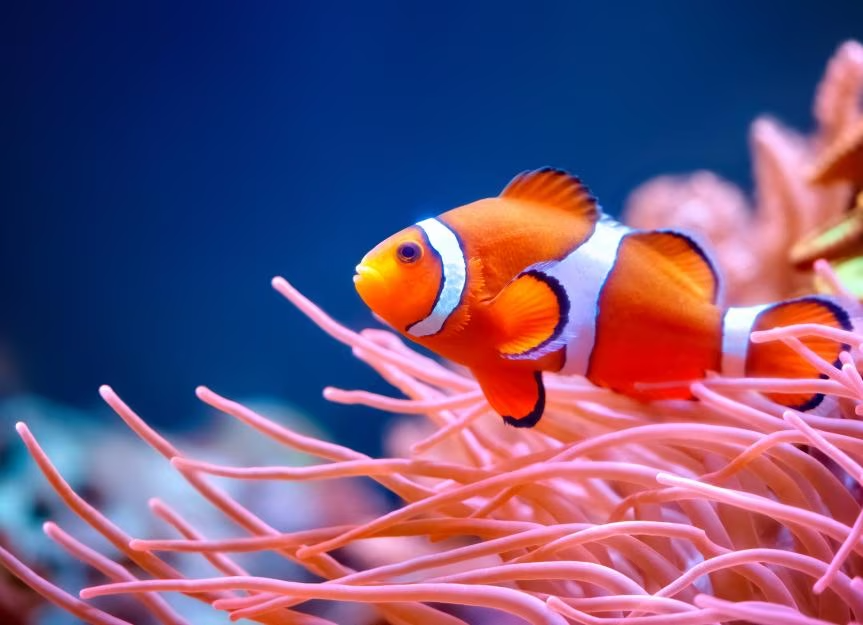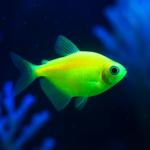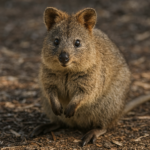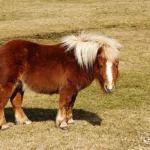
Introducing one of the most beloved and iconic creatures of the ocean, clownfish captivate with their vibrant colors and fascinating behaviors. From their intricate symbiotic relationships with sea anemones to their unique reproductive strategies, these fish have captured the imagination of marine enthusiasts worldwide. In this exploration, we delve into the world of clownfish, uncovering their biology, ecology, and conservation significance. Join us as we journey through the coral reefs they call home, discovering the secrets of these captivating creatures beneath the waves.
Nemo’s Not the Only One: Despite the fame of the orange clownfish, there are actually over 30 recognized species of clownfish, all belonging to the genus Amphiprion. While the orange anemonefish is the most famous, others come in vibrant colors like yellow, black, and white. These species vary in size, coloration, and distribution, but they all share the characteristic symbiotic relationship with certain species of sea anemones. Clownfish have captured the fascination of marine enthusiasts worldwide, not only due to their iconic appearance but also because of their intriguing behaviors and unique ecological roles within coral reef ecosystems.
Size Matters (Not Really): Most clownfish species typically grow to be around 4-6 inches (10-15 cm) in length, making them relatively small fish. However, the largest species, the Maroon Clownfish, can reach a maximum size of 7 inches (18 cm). Despite their small stature, clownfish are resilient and adaptable creatures, well-suited to their complex reef environments. Their compact size allows them to navigate through intricate coral structures and seek refuge within the protective tentacles of their host anemones.
Her Majesty Rules the Anemone: Clownfish live in a fascinating symbiotic relationship with specific species of sea anemones. Within this intricate partnership, the social structure is surprisingly matriarchal. The largest female clownfish in the anemone assumes the dominant role, with a single breeding male and several smaller males present. This hierarchy ensures efficient resource allocation and reproductive success within the anemone’s limited space. The dominant female aggressively defends the anemone territory from intruders, including other fish species and even scuba divers, ensuring the safety and stability of the colony.
Gender Benders: One of the most fascinating aspects of clownfish biology is their unique reproductive strategy. All clownfish are born male, but the dominant female in the anemone can change sex if she dies. This phenomenon, known as protandry, ensures the continuity of breeding within the colony. When the dominant female dies, the largest remaining male will undergo a remarkable transformation, becoming the new breeding male and changing sex in the process. This adaptive strategy maximizes reproductive potential and maintains the stability of the social structure within the anemone.
Sticky Situation: Clownfish have evolved remarkable adaptations to coexist with their host anemones, which possess potent stinging tentacles. To protect themselves from the anemone’s stings, clownfish have a special mucus coating on their skin. This mucous layer acts as a protective barrier, preventing the anemone’s toxins from harming the clownfish. In contrast, other fish species that come into contact with the anemone’s tentacles are not so fortunate and may become prey. This mutualistic relationship benefits both the clownfish and the anemone, providing protection and access to food resources.
Cleaning Crew: Despite their small size, clownfish play a crucial role in maintaining the health of their anemone homes. They act as diligent cleaners, picking off parasites and debris from the anemone’s tentacles and body surface. This cleaning behavior helps prevent infections and disease outbreaks, keeping the anemone healthy and vibrant. In return, the anemone provides the clownfish with protection from predators and a safe haven to retreat to when threatened. This mutualistic relationship exemplifies the intricate interdependence of species within coral reef ecosystems.
Eggcellent Protectors: After the female clownfish lays fertilized eggs on a suitable substrate near the anemone, the male takes on the crucial responsibility of guarding them. The male clownfish diligently tends to the eggs, fanning them with his fins to ensure proper oxygen flow and prevent fungal growth. He fiercely defends the nest from potential predators, chasing away intruders with swift movements and aggressive displays. The male’s dedication to protecting the eggs highlights the importance of parental care in ensuring the survival of clownfish offspring in the challenging reef environment.
Plankton Party: Once the clownfish eggs hatch, the tiny larvae drift with the ocean currents as plankton for several weeks before settling in a suitable anemone. During this planktonic stage, the larvae are highly vulnerable to predation and environmental factors. Their survival depends on chance encounters with the specific species of anemone that will become their future home. This period of dispersal ensures genetic diversity and connectivity among clownfish populations across vast oceanic distances, contributing to the resilience and adaptability of these fascinating fish.
Talk Dirty to Me: Clownfish utilize a complex vocal communication system involving clicks, pops, and whistles to maintain social cohesion and coordinate activities within their anemone habitat. These sounds serve various purposes, including courtship, territorial disputes, and predator alarms, conveying intricate information to colony members. Through these acoustic signals, clownfish establish social hierarchies, resolve conflicts, and synchronize behaviors like feeding and breeding. Effective communication enhances their survival and reproductive success in the dynamic reef environment, highlighting the importance of this sophisticated communication strategy in their ecosystem.
Finding Nemo by Smell: When searching for an anemone to call home, clownfish larvae rely heavily on their sense of smell. They possess specialized olfactory receptors that detect chemical cues released by the anemones, guiding them to the appropriate host species. This olfactory guidance ensures that the larvae settle in anemones that offer suitable habitat conditions and protection from predators. The ability to navigate through vast oceanic distances and locate specific anemone species demonstrates the remarkable sensory capabilities of clownfish larvae. This reliance on olfactory cues highlights the importance of chemical communication in marine environments and underscores the intricate ecological relationships between clownfish and their symbiotic partners.
Nemo’s Real Name: The orange clownfish popularized by the movie “Finding Nemo” is scientifically known as the False Clownfish (Amphiprion ocellaris). Its close relative, the True Clownfish (Amphiprion percula), shares a similar appearance but can be distinguished by having three white bars instead of two and thicker black outlines. While “Finding Nemo” brought widespread attention to clownfish, it’s important to recognize the distinctions between different species to appreciate their diversity and ecological significance accurately.
Fishing for Trouble: Clownfish are sought after as popular aquarium fish due to their vibrant colors and unique behaviors. However, this high demand has led to overfishing in some regions, posing a significant threat to wild populations. Unsustainable harvesting practices can deplete natural stocks and disrupt coral reef ecosystems, affecting not only clownfish but also other reef inhabitants. To address this issue, sustainable captive breeding programs are being developed to reduce the reliance on wild-caught specimens and promote responsible aquarium trade practices.
Coral Champions: Coral reefs serve as vital habitats for clownfish, providing the ideal environment for their host anemones. However, these ecosystems are facing unprecedented threats from climate change, pollution, and overexploitation. Organizations like The Coral Triangle Initiative and The Nature Conservancy are working tirelessly to conserve and protect coral reef ecosystems worldwide. Through collaborative research, conservation initiatives, and community engagement, these organizations strive to safeguard the biodiversity and resilience of coral reefs, ensuring the long-term survival of clownfish and other reef-dependent species.
Big Appetite, Tiny Fish: Clownfish are omnivores, meaning they consume a diverse diet that includes algae, zooplankton, small invertebrates, and even leftover scraps from the anemone’s meals. Their flexible feeding habits allow them to adapt to changing food availability and environmental conditions within the reef ecosystem. By consuming algae and other organic matter, clownfish play a role in nutrient cycling and ecosystem maintenance, contributing to the overall health and balance of coral reef communities.
Not-So-Silent Nemo: Despite lacking vocal cords, clownfish can produce sounds by grinding their teeth together. This sound, often described as a series of clicks or pops, is believed to serve as a form of communication and social signaling within the anemone colony. Clownfish may use vocalizations to establish territory, attract mates, or deter rivals, enhancing their ability to navigate complex social dynamics and coordinate group activities. While these sounds may be imperceptible to human ears underwater, they play a significant role in clownfish behavior and interactions.
Living on the Edge: Clownfish inhabit shallow coral reefs and lagoons in the Indian Ocean, including the Red Sea, as well as the Indo-Pacific Ocean, including the Great Barrier Reef. These tropical marine environments provide abundant food resources, suitable nesting sites, and protection from predators, making them ideal habitats for clownfish. However, these habitats are also vulnerable to environmental stressors such as coral bleaching, pollution, and habitat destruction. By understanding the geographic distribution of clownfish populations, conservation efforts can be targeted to prioritize the protection of their essential reef habitats.
Swimming Buddies: While clownfish are typically solitary within their host anemone, sometimes two breeding pairs may coexist peacefully in a larger anemone. This phenomenon, known as cooperative breeding, occurs when multiple pairs share the same territory and resources without aggression or conflict. However, this arrangement can lead to increased competition for food, space, and reproductive opportunities within the anemone colony. Despite occasional territorial disputes, clownfish generally maintain harmonious relationships within their social groups, relying on complex behaviors and communication signals to navigate social hierarchies and resolve conflicts.
Nature’s Clowns: Clownfish derive their name from their vibrant colors and playful behaviors, which evoke a sense of whimsy and amusement. Their energetic swimming patterns, darting movements, and interactions with the anemone’s tentacles create a captivating spectacle reminiscent of a circus clown’s antics. However, beneath their jovial exterior lies a fascinating array of adaptive traits and ecological adaptations that have allowed clownfish to thrive in the dynamic and competitive coral reef environment. By embracing their role as nature’s clowns, clownfish bring joy and wonder to marine enthusiasts while serving as ambassadors for coral reef conservation.
Anemone’s Aphrodisiac?: Some studies suggest that the stinging cells of the host anemone may play a role in stimulating clownfish reproduction. When the male clownfish brushes against the anemone’s tentacles, it triggers a release of hormones that facilitate egg-laying in the female. This fascinating phenomenon highlights the intricate biochemical interactions between clownfish and their symbiotic partners, shaping their reproductive strategies and breeding behaviors. While further research is needed to fully understand the mechanisms involved, this discovery underscores the complexity of marine symbioses and the interconnectedness of life on coral reefs.
Not-So-Hidden Mickey: Upon close inspection, the body markings of a clownfish may bear a faint resemblance to the silhouette of Mickey Mouse, the iconic Disney character. This resemblance is attributed to the distinctive white bars and black outlines that adorn the clownfish’s body, creating a pattern reminiscent of Mickey Mouse’s ears and head shape. While this resemblance may be purely coincidental, it adds a whimsical touch to the clownfish’s appearance and further enhances their appeal to marine enthusiasts and Disney fans alike.
Predatory Poses: Deception in Paradise: Despite their association with protective anemones, clownfish aren’t completely safe from predators. Some larger fish, such as wrasses and groupers, have developed a clever strategy to bypass the anemone’s stinging defenses. These predators mimic the cleaning behavior of cleaner shrimp by contorting their bodies and displaying specific body language to appear non-threatening. Curious clownfish, unaware of the danger, may approach the disguised predator, making them an easy target. Other predators, like eels and angelfish, can overpower the anemone’s defenses and snatch a clownfish. This illustrates the ongoing arms race between predators and prey in coral reef ecosystems.
Clownfish Conservation: Organizations like The Coral Triangle Initiative and The Nature Conservancy are working tirelessly on coral reef conservation efforts to protect the vital ecosystems that clownfish depend on. These organizations collaborate with local communities, governments, and other stakeholders to establish marine protected areas, implement sustainable fishing practices, and promote public awareness about the importance of coral reef conservation. By addressing threats such as overfishing, habitat destruction, and climate change, these initiatives aim to safeguard the biodiversity and resilience of coral reef ecosystems, ensuring the long-term survival of clownfish and other reef-dependent species.
Future of the Fins: Research into sustainable aquaculture practices and captive breeding programs for clownfish offers hope for the future of these fascinating fish. By breeding clownfish in controlled environments, researchers can reduce the pressure on wild populations and supply the aquarium trade with ethically sourced specimens. These captive breeding programs also contribute valuable data to our understanding of clownfish biology, behavior, and genetics. By combining scientific research with community engagement and policy advocacy, these initiatives strive to ensure a brighter future for clownfish and their fragile ocean habitats.
Fishing for Trouble: Clownfish are popular aquarium fish, but unfortunately, this demand has led to overfishing and threats to wild populations. Unsustainable harvesting practices can deplete natural stocks and disrupt coral reef ecosystems, affecting not only clownfish but also other reef inhabitants. Sustainable captive breeding programs are being developed to combat this issue. These programs aim to reduce the reliance on wild-caught specimens and promote responsible aquarium trade practices. By supporting captive breeding initiatives and choosing sustainably sourced fish for aquariums, enthusiasts can play a role in conserving clownfish and protecting coral reef ecosystems.
Coral Champions: Healthy coral reefs are vital for clownfish survival, as they provide the ideal habitat for their host anemones. However, coral reefs are facing unprecedented threats from climate change, pollution, and overexploitation. Organizations like The Coral Triangle Initiative and The Nature Conservancy are working on coral reef conservation efforts to protect these vital ecosystems. Through collaborative research, conservation initiatives, and community engagement, these organizations strive to safeguard the biodiversity and resilience of coral reefs, ensuring the long-term survival of clownfish and other reef-dependent species.
Frequently asked questions about clownfish:
Why do clownfish live in anemones?
Clownfish have a symbiotic relationship with specific anemone species. This means both organisms benefit from the association. Here’s how:
Protection for the Clownfish: The anemone’s stinging tentacles deter most predators, providing a safe haven for the clownfish. The anemone’s stinging cells wouldn’t harm the clownfish due to a special mucus coating on their skin.
Benefits for the Anemone: Clownfish act as a cleaning crew, picking off parasites and debris from the anemone, keeping it healthy. Additionally, clownfish may even scare away predators that might harm the anemone.
Can clownfish survive without anemones?
No, clownfish rely heavily on anemones for survival. The anemone’s protection is crucial for them to avoid predators. Additionally, clownfish use the anemone’s tentacles for shelter during strong currents and while sleeping.
However, clownfish larvae, after hatching from eggs, are planktonic and drift with the currents for weeks before finding a suitable anemone home. During this time, they are vulnerable to predators and rely on luck to find a compatible anemone.
Are all clownfish orange like Nemo?
While the orange anemonefish (Amphiprion ocellaris) is the most popularized by the movie “Finding Nemo,” there are over 30 recognized clownfish species. They come in a vibrant array of colors, including: Yellow, Black, White or combinations of these colors. Some clownfish even have distinctive markings, like stripes or spots.
Are clownfish aggressive?
Clownfish can exhibit territorial behavior, especially within their anemone home. They may chase away other fish, including other clownfish, that venture too close. This behavior helps maintain the social hierarchy within the anemone, with the dominant female being the most aggressive.
Clownfish can also make sounds like clicks and pops, which scientists believe are used for communication and dominance displays.
How long do clownfish live?
The lifespan of a clownfish depends on whether they live in the wild or captivity.
In the wild: Clownfish typically live for around 6-8 years. Threats like predators, disease, and competition for resources can impact their lifespan.
In captivity: With proper care in an aquarium, clownfish can live for up to 10-12 years, sometimes even longer.
This is because they are protected from predators and have a consistent food source.









